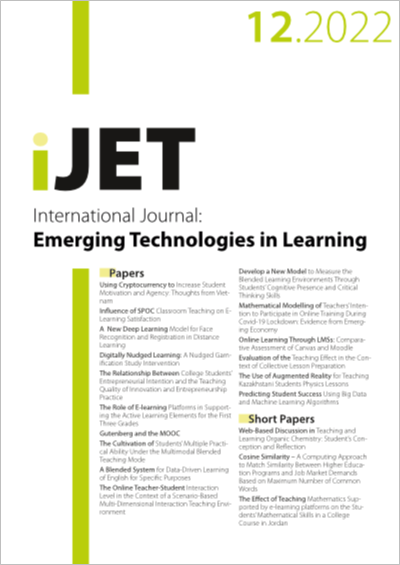A New Deep Learning Model for Face Recognition and Registration in Distance Learning
DOI:
https://doi.org/10.3991/ijet.v17i12.30377Keywords:
face recognition, deep learning, face identification, distance learning, feature extractionAbstract
The demand for secure, accurate, and reliable identification of individuals using facial recognition has attracted considerable interest in education, security, and many other sectors, not limited because it is robust, secure, and authentic. Recently, the demand for distance learning has increased dramatically. This increase is due to various barriers to learning that arise from enforced conditions such as seclusion and social distancing. Facial feature extraction in distance education is valuable in supporting face authenticity as it prevents the position of participants from changing, especially during the examination phase. In the field of face recognition, there is a mismatch between research and practical application. In this paper, we present a novel but highly efficient Deep Learning model for improving face recognition and registration in distance education. The technique is based on a combination of sequential and residual identity blocking. This makes it possible to evaluate the effectiveness of using deeper blocks than other models. The new model has proven to be able to extract features from faces in a high and accurate manner in compared with other state-of-the-art methods. In registration processing, there are several challenges related to training data limitation, face recognition, and verification. We present a new architecture for face recognition and registration. Experiments have shown that our registration model is capable of recognizing almost all faces and registering the corresponding labels.
Downloads
Published
How to Cite
Issue
Section
License
Copyright (c) 2022 Ahmed B Salem Salamh, Halil Ibrahim Akyüz

This work is licensed under a Creative Commons Attribution 4.0 International License.


